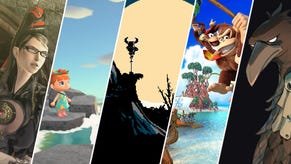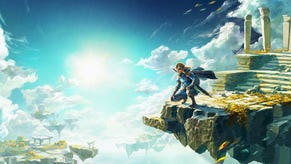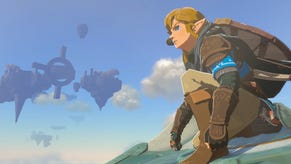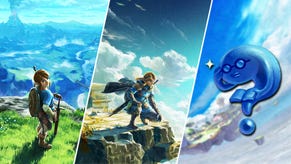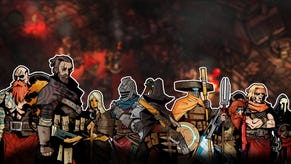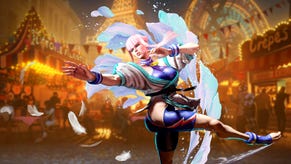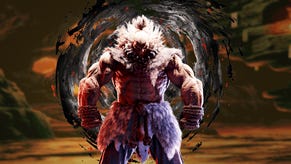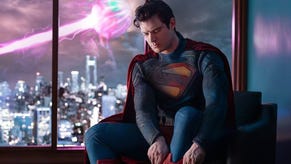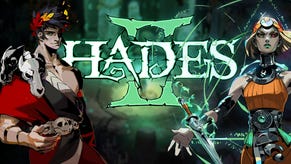The Legend of Zelda: Breath of the Wild Is Based Around a Perfect Apocalypse
A post-apocalyptic setting need not be grim and grey. In fact, it shouldn't be.
This article first appeared on USgamer, a partner publication of VG247. Some content, such as this article, has been migrated to VG247 for posterity after USgamer's closure - but it has not been edited or further vetted by the VG247 team.
Movies offer us vivid depictions of post-apocalyptic worlds. If you've ever seen The Day After, the 1983 TV film about the direct effects of a nuclear war, you probably associate the end of civilization with radiation-blasted city ruins ruled over by rats and roaches.
The utter end is even grimmer in the 1984 TV movie Threads, which shows the immediate devastation of a nuclear war and the survivors' struggles twenty years after the attack. Again, there's little to speak of other than rodents, rubble, and disease. Chillingly, few words are exchanged between the movie's characters in the years following the attacks. The children of the survivors are borderline feral.

As far as movie apocalypses are concerned, that's just the tip of the fallout-dusted iceberg. There are more, so many more, and the majority are bleak and hopeless. The media that inspires the post-apocalyptic worlds we tread through in video games are typically rusted-over ruins where clean water is scarce, food is poisoned, animals are mean, and people are meaner.
The Fallout series, arguably the best-known video game franchise about surviving the apocalypse, is based heavily on the Mad Max universe and the Harlan Ellison story A Boy and His Dog. Neither contains much in the way of life, color, or hope—which is exactly what the authors intended. Trying to carry on after a devastating event is not anyone's idea of a good time. There's an excellent reason why War Games' philosophy about nuclear war ("The only winning move is not to play") has remained sacred since its conception in 1983.
Though most post-apocalyptic wastelands presented in video games are still irradiated hellholes you wouldn't want to take your worst enemy to, some recent games involving Armageddon hold off on turning the "Bleak!!" dial all the way up. Fallout 4, which takes place 200 years after all-out nuclear war, is surprisingly bright. You see occasional blue skies and flashes of greenery, though all it takes is one radiation storm to remind you the world's been irrevocably damaged. The Last of Us is another end-of-the-world game that's decorated with nature's finest colors despite the grim circumstances surrounding its world and characters.

The most compelling and intriguing post-apocalyptic world I've visited to date, however, is brimming with life, saturated with color, and populated by decent, helpful people. It's the overgrown iteration of Hyrule we see in the aptly-named The Legend of Zelda: Breath of the Wild.
Wasteland of plenty
I beg your pardon for using the word "compelling" to describe any sort of post-apocalyptic setting. After all, countless people die (or have died) in said settings, and Breath of the Wild is no exception. But there's no denying Nintendo's created a fascinating "wasteland" for its latest Zelda game—and when you think over all the possible apocalyptic scenarios humankind is capable of inflicting upon itself, wild Hyrule is surprisingly close to what we can expect in the years following a disaster.
Here's a quick, spoiler-free summary of what went down in Hyrule's 'hood. Ganon sought to return to the realm, and the magi-tech defenses meant to keep him contained went terribly awry. The resulting war to contain him again was (barely) successful, and the destruction it wrought is felt in nearly every corner of Hyrule.

100 years have passed. Ganon still seeks to break free of his confines, and even his muted presence has adverse effects on Hyrule. However, there's been some measure of recovery, though the scars from the war are still very visible.
The Hyrule Link explores is incredibly lush. Ruins and other signs of past civilizations are everywhere, most of which are overgrown. There are several small settlements dotted around the map, but the rest of the world belongs to reams of deer, wild horses, foxes, boars—and monsters.
Birdsong is constant when the sun is up, with the calls of whip-poor-wills giving way to crickets and owls as night creeps in. Fish splash in the innumerable creeks and waterfalls. Hyrule is a lonely place in Breath of the Wild, but it's far from empty.
Human fallout: Worse than the radioactive kind
It's reasonable to immediately dismiss the supposed realism of Hyrule's post-apocalyptic scenario in Breath of the Wild. After all, Ganon's attack and the Hyrulians' counter-attack were assumedly magic-based. No nuclear weapons were used, which means no radiation lingered after the attacks, so doubtlessly it was easy for life to bounce back once Ganon was put away.
Movies, books, and games about the end of the world understandably associate fallout with lifelessness. We believe radioactive dust salts whatever soil it lands on and sterilizes it for centuries, if not millennia.
But we have a thriving real-life example to demonstrate that's not the case. The Chernobyl Exclusion Zone is a 2,600 square kilometer patch of land that became heavily irradiated after the Chernobyl Nuclear Power Plant suffered a meltdown in 1986. The amount of radioactive material that settled around the area following the disaster is far higher than the amount that impacted the Japanese city of Hiroshima after the atomic bomb was dropped in 1945.

The immediate effect of the meltdown was devastating for surrounding flora, fauna, and humans. The forest surrounding the power plant turned red and skeletal after absorbing lethal amounts of radiation. But it's been 31 years since the disaster, and wildlife is abundant in the Exclusion Zone even though parts of the area are still highly irradiated. Wolves, wild horses, and other animals that were scarce or extinct in the Ukraine thrive in and around Chernobyl's ruins.
Parts of northern Japan became similarly uninhabitable inn 2011 after a huge earthquake caused another, albeit smaller, power plant accident in the Fukushima prefecture. Animals have also moved in to claim the land humans abandoned—most notably "radioactive boars."
It's important to note most of these animals are still suffering the effects of radiation, including birth defects, sterility, cancers, and cataracts. More worryingly, bacteria and microbes have been affected in ways that aren't clearly understood; the Red Forest's dead trees should be mulch by now, but they've barely decomposed at all.
The larger (and very depressing) message behind the world's nuclear disasters is that humankind is far and away the biggest impediment to wildlife's chances of survival. Plants and wild animals can thrive even after massive doses of radiation alter their physique, but they wilt and die in the presence of civilization.
Dark memories linger
Breath of the Wild reflects this cold fact. Hyrule's remaining population ekes out their living in small settlements, barring a few brave adventurers who wander the dirt trails. You'll find domesticated animals like dogs and cattle in these humble towns, but the wild game gives them a wide berth in favor of the untamed hills and forests—which are only plentiful because there aren't (yet) enough people around to clear them for their own use.

Interestingly, Breath of the Wild does have a magic-based analogy to nuclear fallout: The pulsating purple-black sludge called "Ganon's malice." If Link gets too close to this nastiness, he loses life energy in a hurry. The malice is abundant at ground zero of Ganon's failed invasion attempt, namely Hyrule Castle. The area is bleak and scarred, a real contrast to the rest of the realm's overgrow wildlands. If Breath of the Wild has an area that does echo the media stereotype of a hopeless post-apocalyptic wasteland where nothing can grow, the remnants of Hyrule Castle Town is it.
Incidentally, the shattered ruins of Hyrule Castle Town are a good example of how End of Days fiction doesn't have to be All Dark All the Time to make an emotional impact. Even casual Zelda fans who make the trip will find themselves imbued with sad memories. The landscape that helped make Ocarina of Time so iconic is reduced to a perverted shadow of its former self. The fountain at the center of the town is dry and dead. The watchtower young Link clambered over to sneak past Hyrule Castle's guards is in ruins. Lon Lon Ranch's stables are little more than weather-worn stumps of wood, and the track Link raced Epona around is a barely-noticeable strip of dirt amongst weeds and rubble.
The Lon Lon milk of human kindness
Another reason it's easy to dismiss Breath of the Wild's depiction of the end of the world as unrealistic is the aforementioned human settlements teeming with domesticated animals and people who are generally in good health. Post-apocalyptic media is almost invariably pessimistic about human nature. Cormac McCarthy's The Road is particularly grim, presenting us with a dog-eat-dog world where surviving humans revel in rape, human trade, and cannibalism.

Humans are capable of horrendous acts, no arguing that. But if we're as instinctually feral as apocalypse fiction makes us out to be, would we even have evolved to create civilization in the first place? Scarce resources are nothing new in human history. If we hadn't banded together millennia ago to shake down Mother Nature for whatever meager sustenance we could get, we'd have died off in record time.
Arguably, Breath of the Wild offers a sensible depiction of where humankind might find itself 100 years after a major disaster: Living in small villages populated by tradespeople, sustained by the abundant game in the hills and fish in the waters. Life in Breath of the Wild's version of Hyrule isn't necessarily idyllic (the looming threat of Ganon's return is easy to remember whenever the blood moon rises, and monsters attack travellers frequently), but neither is everyone obsessed with killing, looting, and making war with outside tribes. People are most concerned with keeping their families happy and safe, which is the core concern of 99% of humanity.
The wilds at the end of the world
I had a lot of expectations for Breath of the Wild. The finished game meets most of them, and then some. As someone who's keenly interested in post-apocalyptic fiction (growing up in the echo of the Emergency Broadcast System's wail will do strange things to your mind), it's been a treat to see Nintendo's vision of a damaged Hyrule and witness its (mostly) successful attempts to pull itself back together. I don't know what Hyrule will look like in the next Zelda game, but Breath of the Wild's quiet, windy hills will stay with me for a long time.



